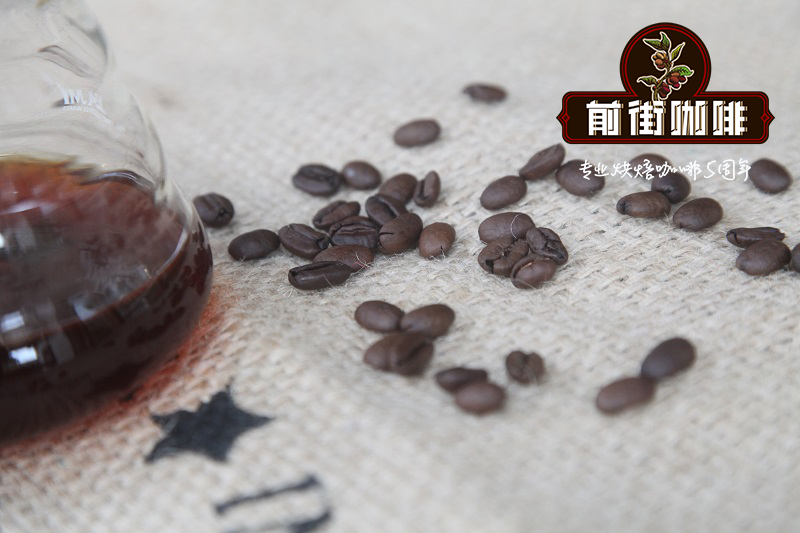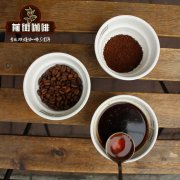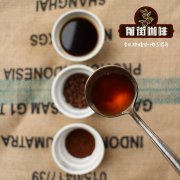Honduran Coffee producing area | Koban District, Obalaca District, Monde Seiyos District, Gongmayagua

Professional coffee knowledge exchange More coffee bean information Please pay attention to coffee workshop (Weixin Official Accounts cafe_style)
Honduras coffee region| Coban District, Obaraka District, Montecidos District, Gongmaya melon flavor difference?
Honduras previously had a low profile in the consumer market due to a lack of strong support for raw bean handling and transportation. In recent years, Honduras has actively changed and expanded its coffee industry, allowing Honduran coffee to slowly open up its international reputation. Honduras harvests 3 million bags of coffee every year, providing the world with perfect coffee and unique coffee aroma, quality and quality, and has become the second largest coffee exporter in Central America and the tenth largest in the world.
Honduras has become the second largest coffee exporter in Central America and the tenth largest coffee exporter in the world, with small coffee farmers accounting for the vast majority of its 280,000 hectares of coffee plantations. Eco-Green Honduran Coffee comes from the COAGRICSAL cooperative, located in the western region of Honduras. It was founded in 1998 and currently has more than 1500 members. It grows steadily every year.
Honduras 'geographical conditions are not inferior to its neighboring coffee producing countries such as Guatemala and Nicaragua. Honduras, however, had a low profile in the consumer market because it did not have strong support for the handling and transportation of raw beans. However, in recent years, Honduras has begun to change greatly. The emphasis on coffee industry has made Honduran coffee slowly open up its international reputation. Honduras has six major coffee producing regions, including Santa Barbara, Copan, Ocotepeque, Lempira, La Paz, and El Paraiso in the south-east. Honduran coffee tastes less acidic and caramel tastes sweeter. Coffee from these five different regions also tastes slightly different, some slightly sour, some have a unique aroma. The quality is not bad at present, but because it is still developing its popularity, the coffee price in Hongguo is actually quite competitive at present. Because of its flavor characteristics, it is a good choice as a single ingredient or added to a mixed coffee, or even added as one of the Espresso ingredients.
To improve the living conditions of producers and the quality of their products, the cooperative develops crop diversity projects, including pepper and cocoa beans. Community development funds are also used to build roads and drinking water projects, maintain schools and community development, and train members to plant trees and restore shade to protect nature in a friendly way.
Rich bitter sweet cocoa aroma, like a healing coffee journey
Honduras coffee production area is located in the western high mountains 1000--1900 meters above sea level, severe terrain and climate tempering, coupled with fertile soil, Honduras coffee beans have a special strong bitter sweet cocoa aroma.
The coffee beans are SHG (Strictly High Grown), naturally shaded and washed, presenting a clean taste and a stable smell of coffee beans. Once in the mouth, it feels like a healing coffee journey.
Honduras coffee is divided into six major production areas, spread in the west and south, namely Copan (Copan), Opalaca (Opalaca), Montecillos (Montecillos), Gongmaya (Comayagua), Agalta Tropical (Agalta Tropical), El Paraiso (El Paraiso), the average planting height is more than 1,100 meters above sea level.
Hongguo coffee quality is first-class, prices are also the most competitive in Central America, mainly exported to the United States, Germany and Japan. Coffee varieties are 100% Arabica, 69% HG, 12% SHG and 19% CS. The main brands are Typica, Bourbon, Caturra, Villa Sarchi and Lempira.
Coban District
Copan, located between Copan, Ocotepeque and Lempira regions. The coffee from this region exhibits intense chocolate flavours, characterized by a blend of honey and caramel sweetness, with relatively light fruit flavours 1,000 - 1,500
Obaraka District
Opalaca, located between Santa Bárbara, Intibucá and Lempira, exhibits intense lemon flavours, neutralised with honey and caramel sweetness, with distinct fruit flavours 1,100 - 1,400
Montecillos, Montecillos, located between La Paz, Comayagua, Santa Bárbara and Intibuca, is full of rich fruit and sweet aromas with lemon and floral notes. Lemon and fruit aromas are important features, especially peach and orange 1,200 - 1,600
Comayagua, located between Comayagua and Francisco Morazán. Lemon flavor, sweet and chocolate flavor 1,000 - 1,500
Front Street Recommended Brewing:
Filter cup: Hario V60
Water temperature: 90 degrees
Abrasion: Small Fuji Abrasion 3.5
Cooking method: water-powder ratio 1:15, 15g powder, first injection of 25g water, stewing for 25s, second injection to 120g water, water cut off, wait for the powder bed water to drop to half, then inject water slowly until 225g water, extraction time about 2:00
Analysis: Three-stage brewing, clear coffee before, during and after the flavor. Because V60 has many ribs, the drainage speed is faster, and the extraction time can be prolonged when the water is cut off.
Important Notice :
前街咖啡 FrontStreet Coffee has moved to new addredd:
FrontStreet Coffee Address: 315,Donghua East Road,GuangZhou
Tel:020 38364473
- Prev

Escoki, Puerto Rico. Growing history of Yaoke Selecto Yauco specialty coffee?
Professional coffee knowledge exchange more coffee bean information please follow the coffee workshop (Wechat official account cafe_style) Escoki multi-producing area of Puerto Rico | Yaoke Escogido Yauco specialty coffee growing history? Yocott's choice of coffee is the best in the world. In 1736, coffee trees were introduced from Martinique to Puertp Rico. Most of the early coffee was made by Cosey.
- Next

17th COE in Honduras in 2017 | Lover Manor | International bidding batch of Pacas seed washing
Professional coffee knowledge exchange more coffee bean information please follow the coffee workshop (Wechat official account cafe_style) 2017 Honduras COE 17th | Valentine's Manor | Pacas seed washing international bidding batch flavor? Honduras (COE) 17th place in the Excellence Cup (participating for the first time), Love Saint Manor (Finca Don Juan) Pacas seed (Pacas) washed coffee
Related
- Detailed explanation of Jadeite planting Land in Panamanian Jadeite Manor introduction to the grading system of Jadeite competitive bidding, Red bid, Green bid and Rose Summer
- Story of Coffee planting in Brenka region of Costa Rica Stonehenge Manor anaerobic heavy honey treatment of flavor mouth
- What's on the barrel of Blue Mountain Coffee beans?
- Can American coffee also pull flowers? How to use hot American style to pull out a good-looking pattern?
- Can you make a cold extract with coffee beans? What is the right proportion for cold-extracted coffee formula?
- Indonesian PWN Gold Mandrine Coffee Origin Features Flavor How to Chong? Mandolin coffee is American.
- A brief introduction to the flavor characteristics of Brazilian yellow bourbon coffee beans
- What is the effect of different water quality on the flavor of cold-extracted coffee? What kind of water is best for brewing coffee?
- Why do you think of Rose Summer whenever you mention Panamanian coffee?
- Introduction to the characteristics of authentic blue mountain coffee bean producing areas? What is the CIB Coffee Authority in Jamaica?

